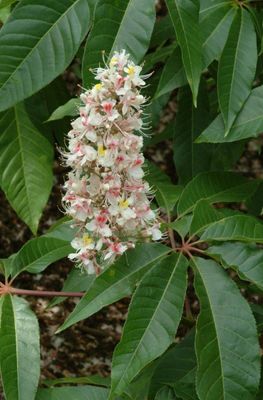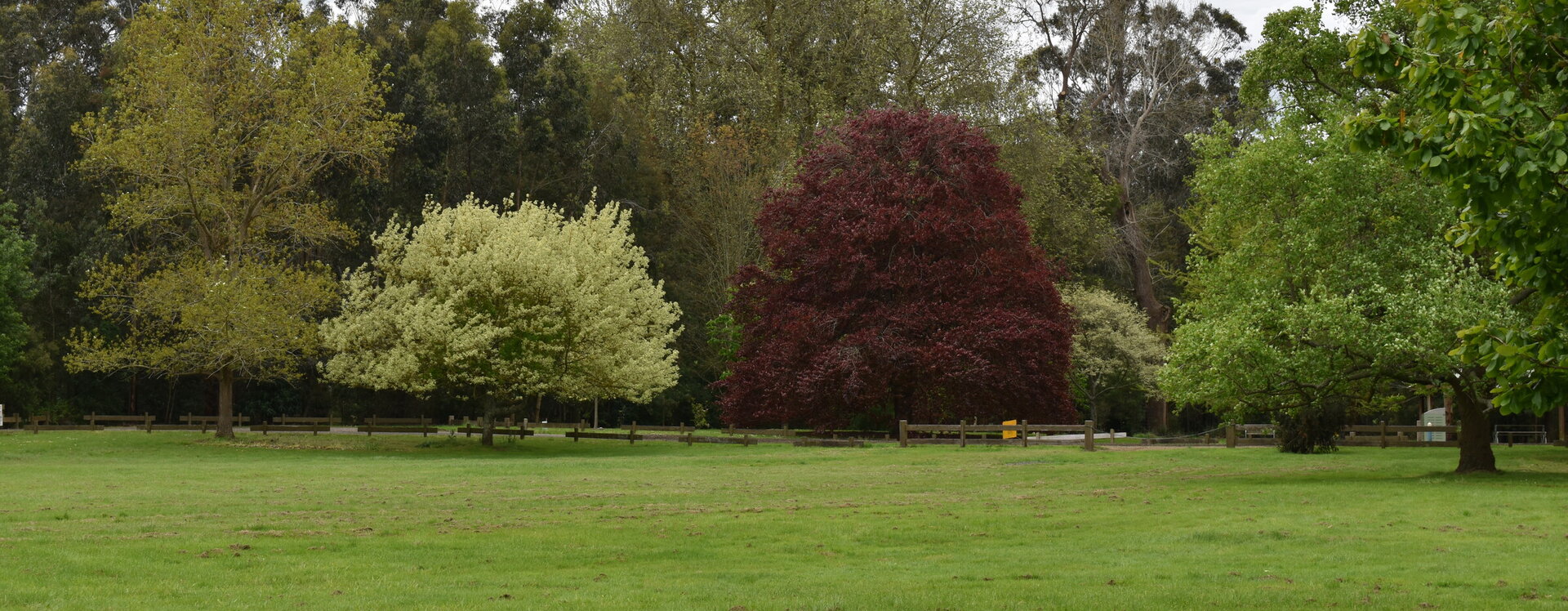

Aesculus indica
Aesculus
Aesculus indica is an attractive tree growing to 9–12 m with a spread of about 11–15 m,
and the mature tree forms a beautiful round canopy. It is native to the lower slopes of the north-west Himalaya, from Afghanistan and Pakistan to western Nepal. it is found up to about 3,000 m above sea level. and in the Himalaya it is one of the dominant trees of deciduous forests, growing alongside oaks, maples,birches and laurels.
The leaves have 5-9 thin, finger-like leaflets on each leaf-stalk. The central leaflets are longer than the outer ones, and grow up to 30 cm long. Young leaves are reddish-bronze, turning glossy dark green, and finally golden in the autumn. The flowers are carried in upright spikes, up to 30 cm high or more. Individual flowers have four petals, the upper pair being mainly white, with a yellow blotch at the base turning red, while the lower two petals are tinged with pink. The fruits are smooth and spineless, and contain a shiny seed ('conker') which is wrinkled, and is darker and smaller than that of A. hippocastanum.
Its leaves are used as cattle fodder in parts of Northern India. Its seeds are dried and ground into a bitter flour, called tattawakher. The bitterness is caused by saponin-class toxin called aesculin, This is poisonous to many animals, including humans, because it destroys red blood cells. However, some animals appear to be unaffected - for example deer and squirrels eat the seeds. Aesculin is rinsed out by thoroughly washing the flour during its preparation. The flour is often mixed with wheat flour to make chapatis and also to make a halwa (Indian sweetmeat) and sometimes is served as a dalia, (a type of porridge or gruel) during fasting periods. It is used in traditional Indian medicine, for the treatment of some skin diseases, rheumatism, as an astringent, and in the relief of headaches. Planted in 2022.
255.00 Location A5 Latitude: -38.401384000000 Longitude: 146.052555000000

